Abstract
1. Discrete depolarizations of the photoreceptor cell membrane called discrete waves occur spontaneously and in response to illumination in the eye of the horseshoe crab, Limulus. Each light induced discrete wave is caused by the absorption of a single photon.
2. The frequencies of spontaneous and light induced discrete waves were studied at different temperatures from 0 to 25° C using a new method of counting them to avoid errors due to their temporal overlap.
3. The frequency of spontaneous discrete waves followed the Arrhenius relationship with activation energy equal to 48·6 kcal.
4. The frequency of the discrete waves caused by a fixed level of steady illumination was not significantly changed when the temperature of the cell was changed.
5. The relationship of the frequency of spontaneous discrete waves to temperature was compared to a prediction based on the relationship of the quantum relative spectral sensitivity of the Limulus eye to the temperature of the eye. The prediction was in good agreement with observation and suggests that spontaneous discrete waves result from thermally induced cis to trans isomerizations of visual pigment molecules.
Full text
PDF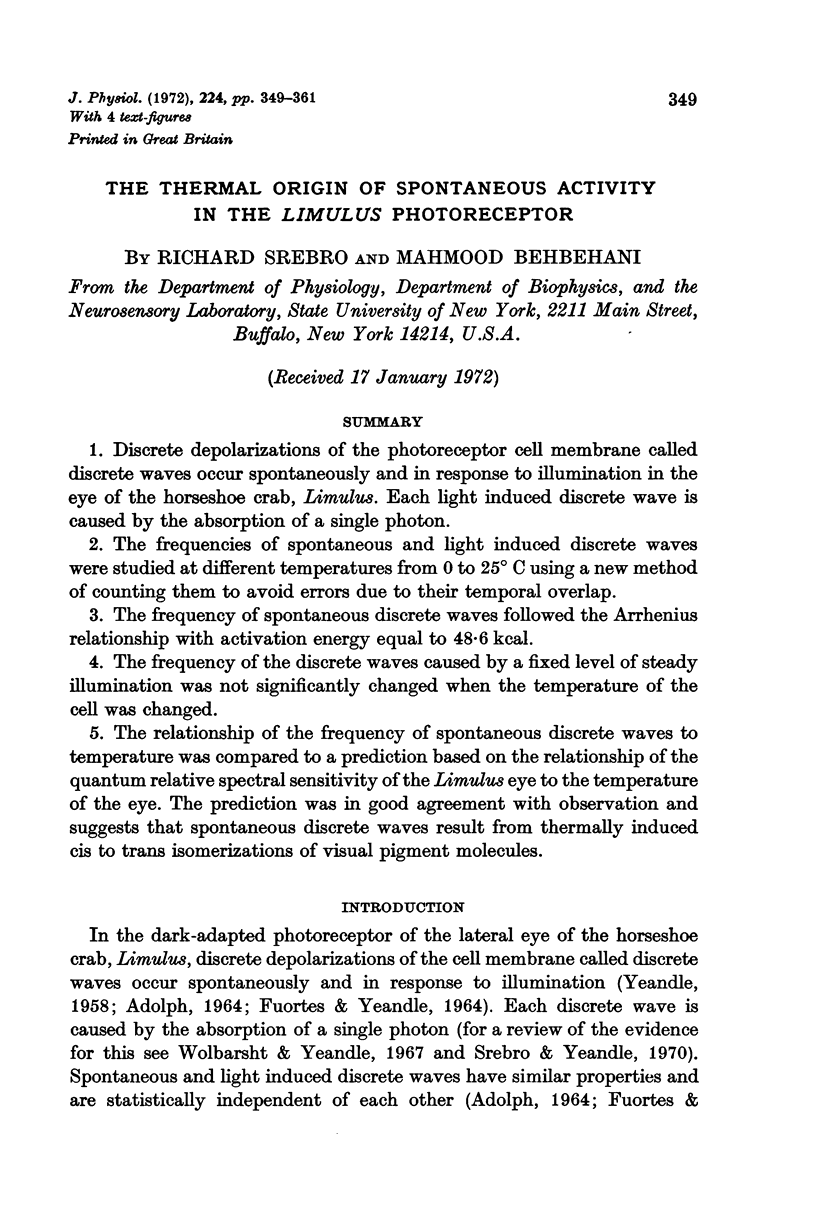
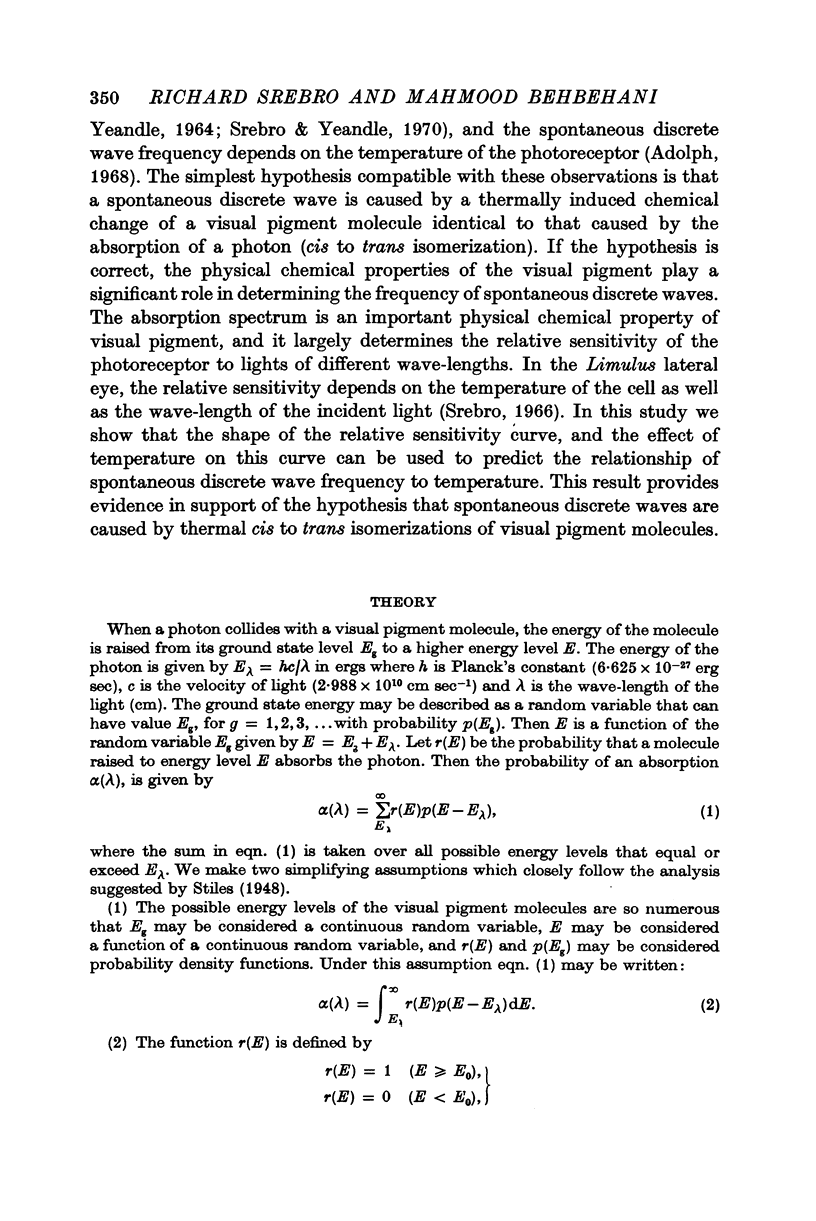
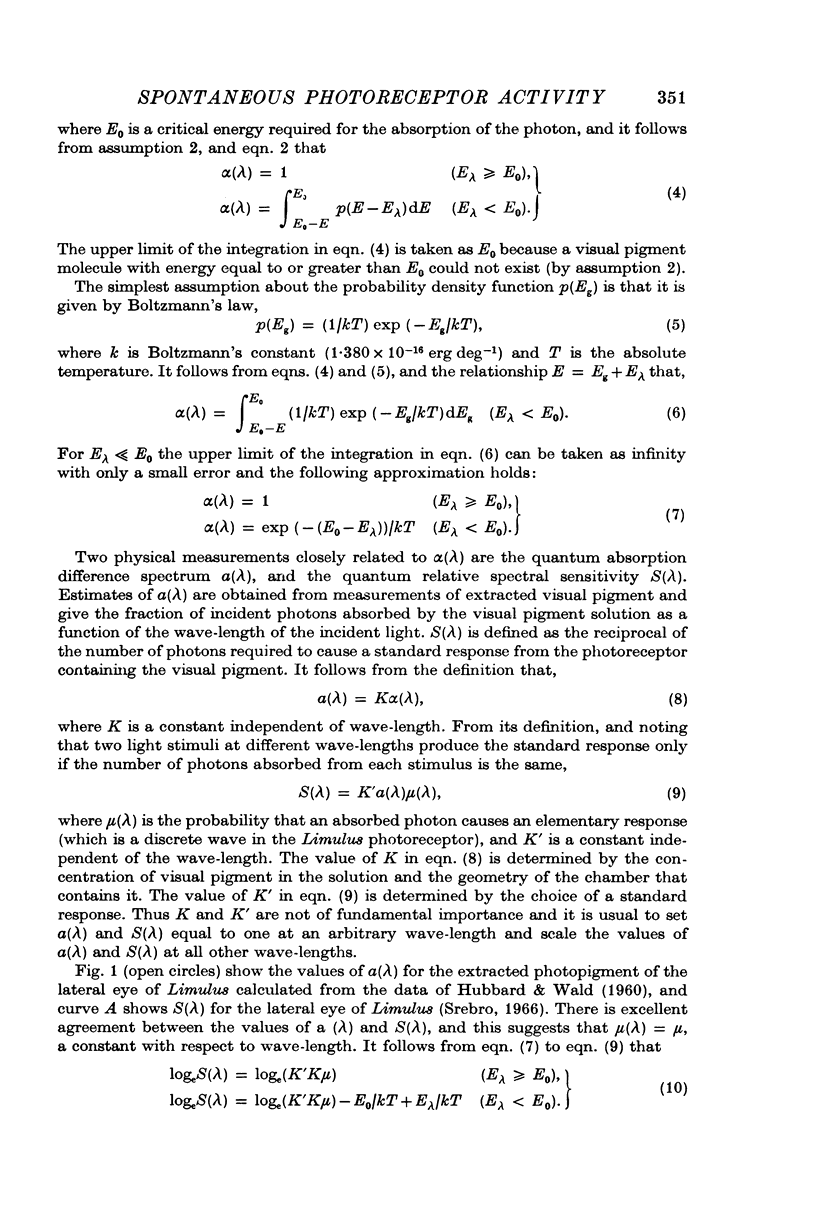
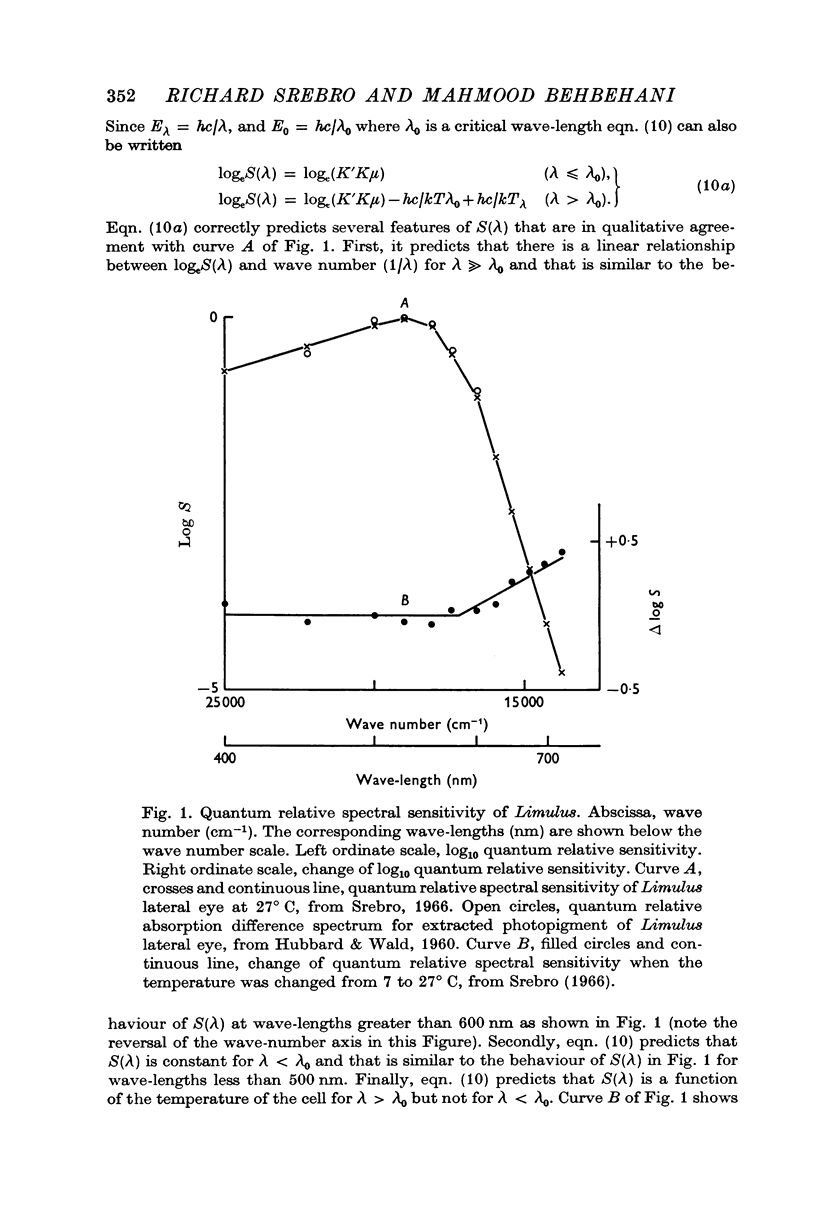
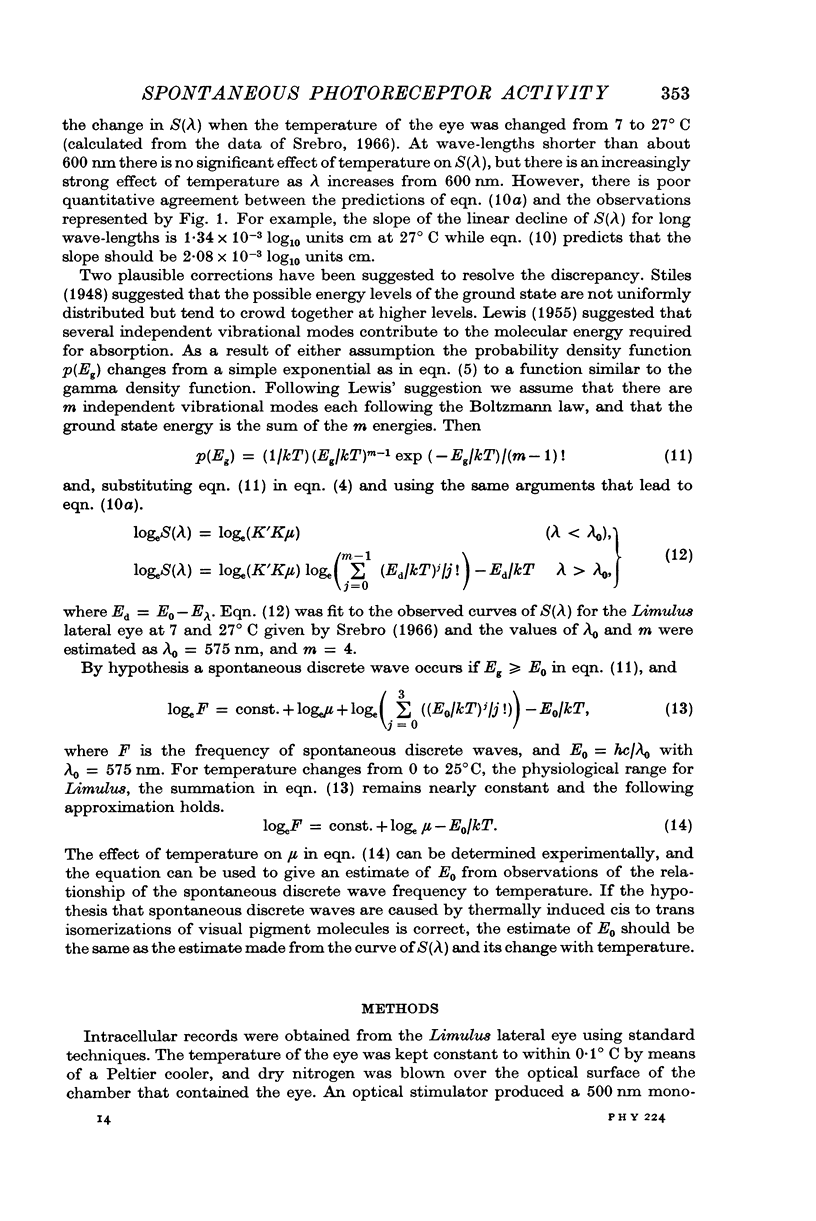
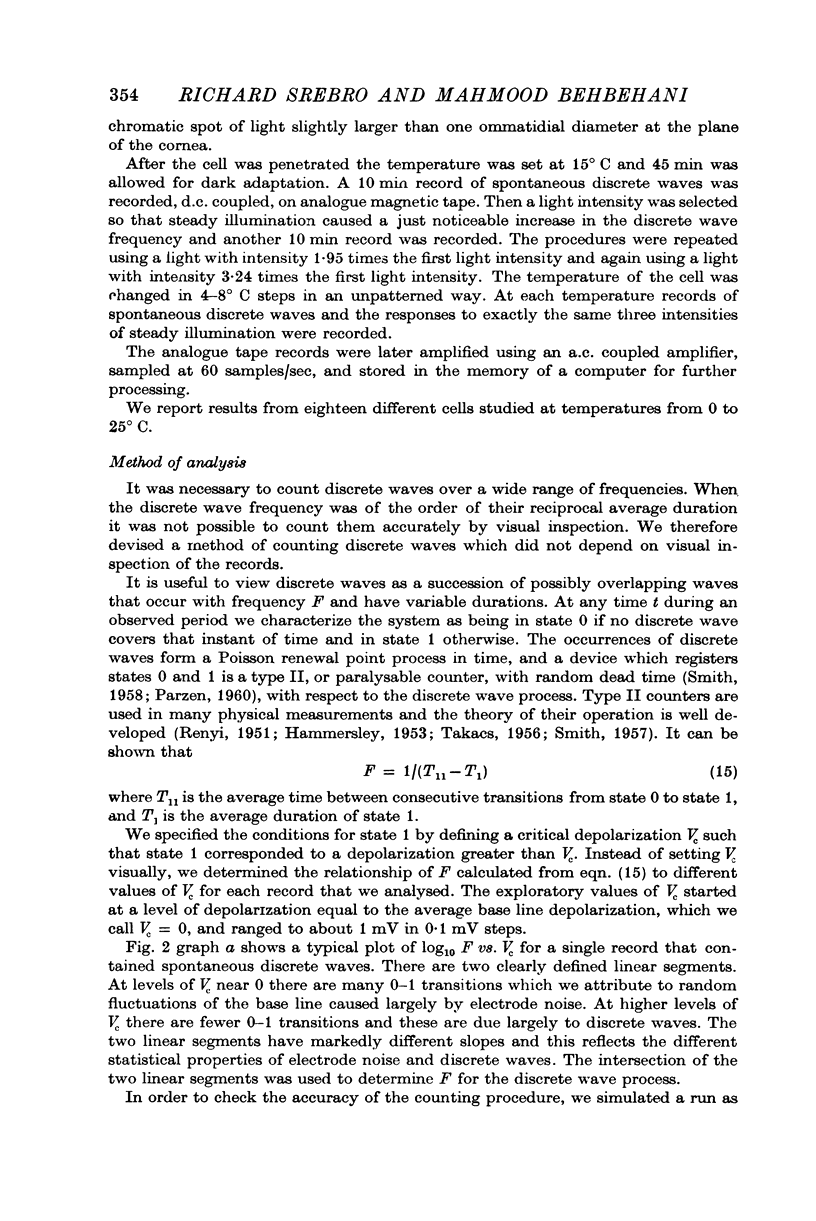
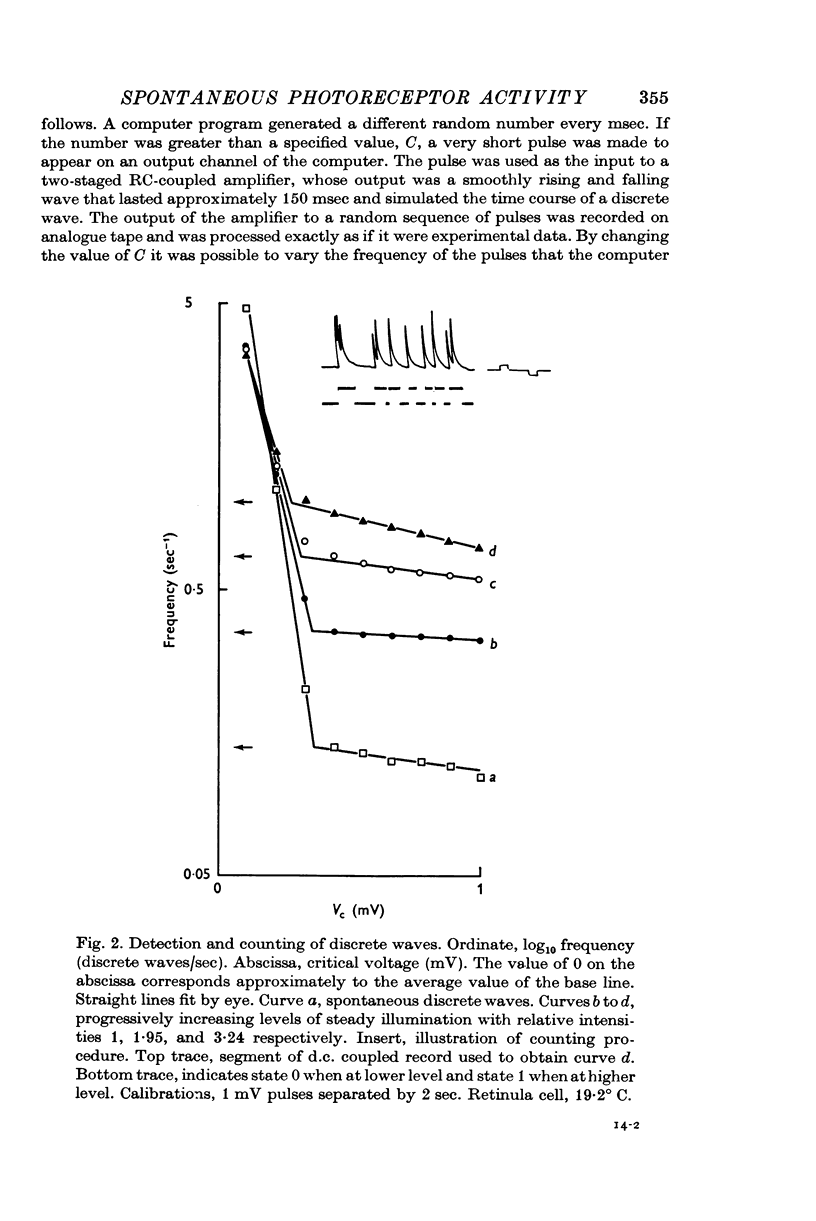
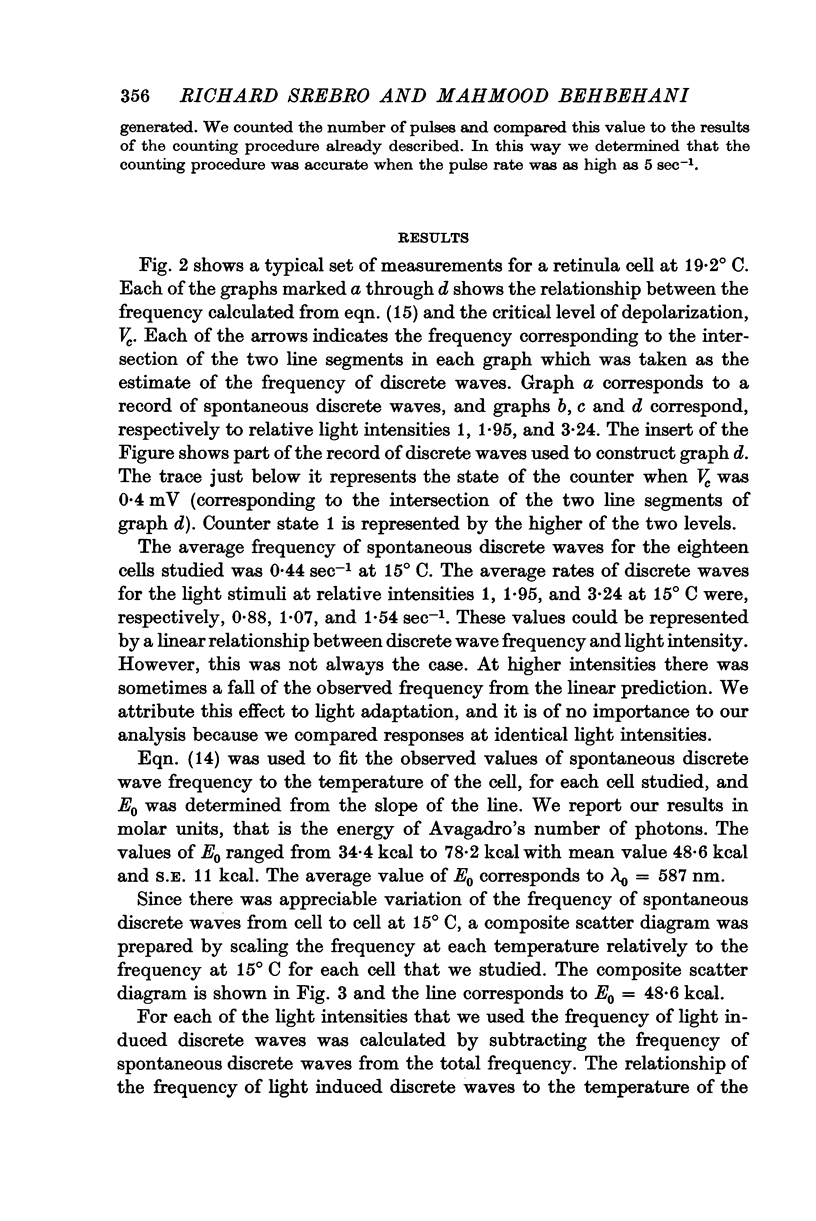
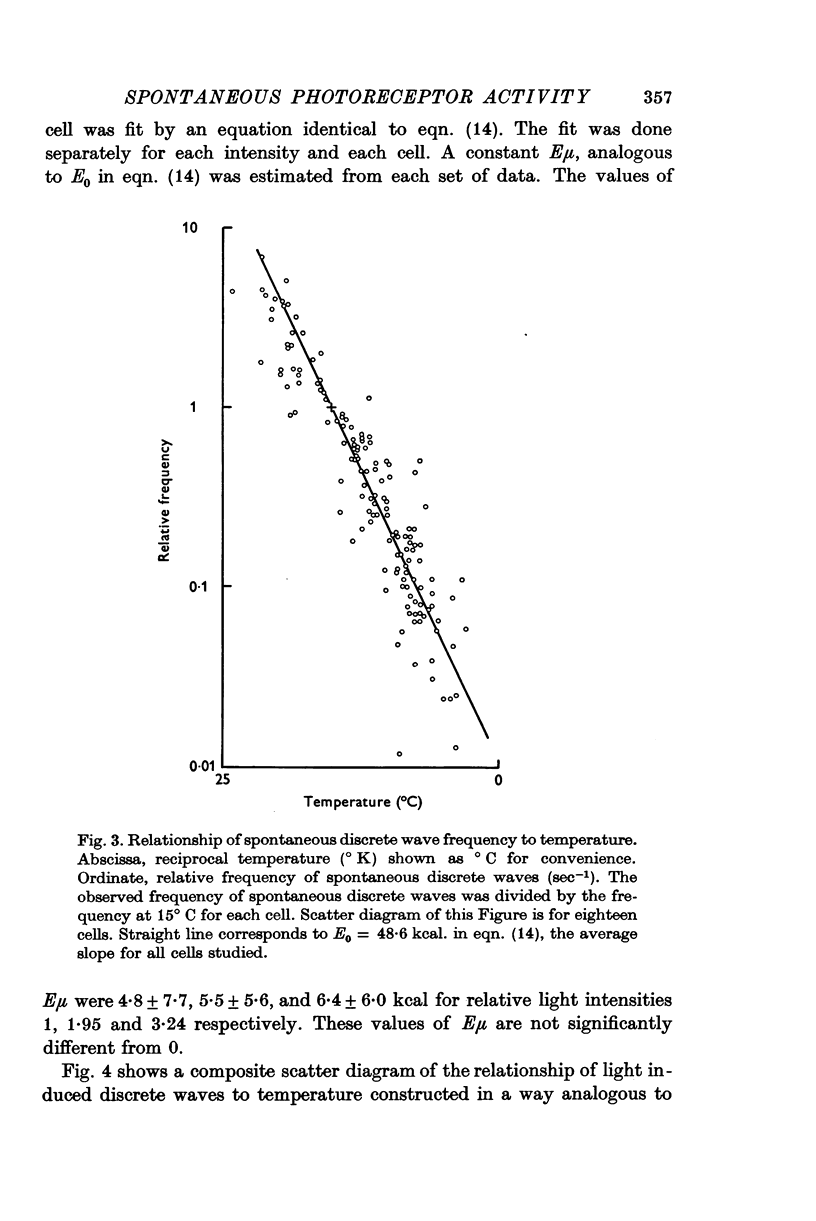
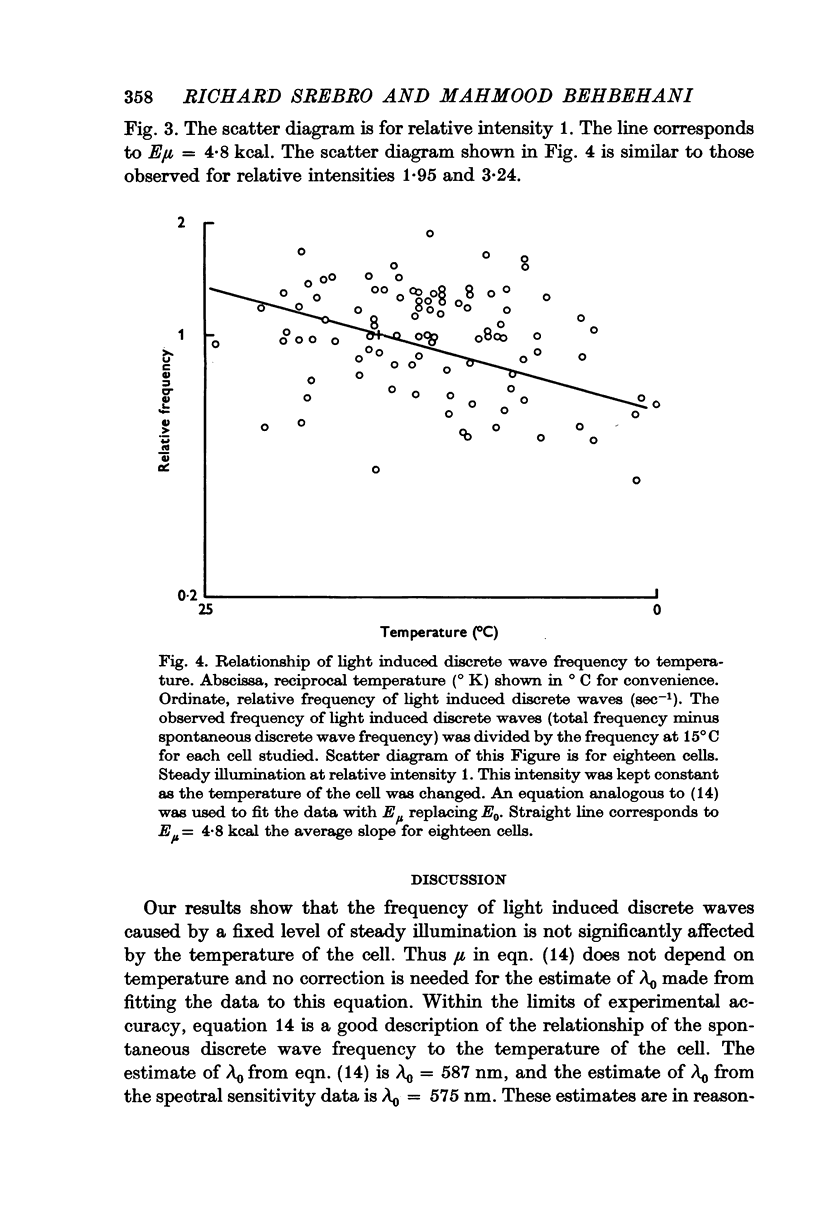
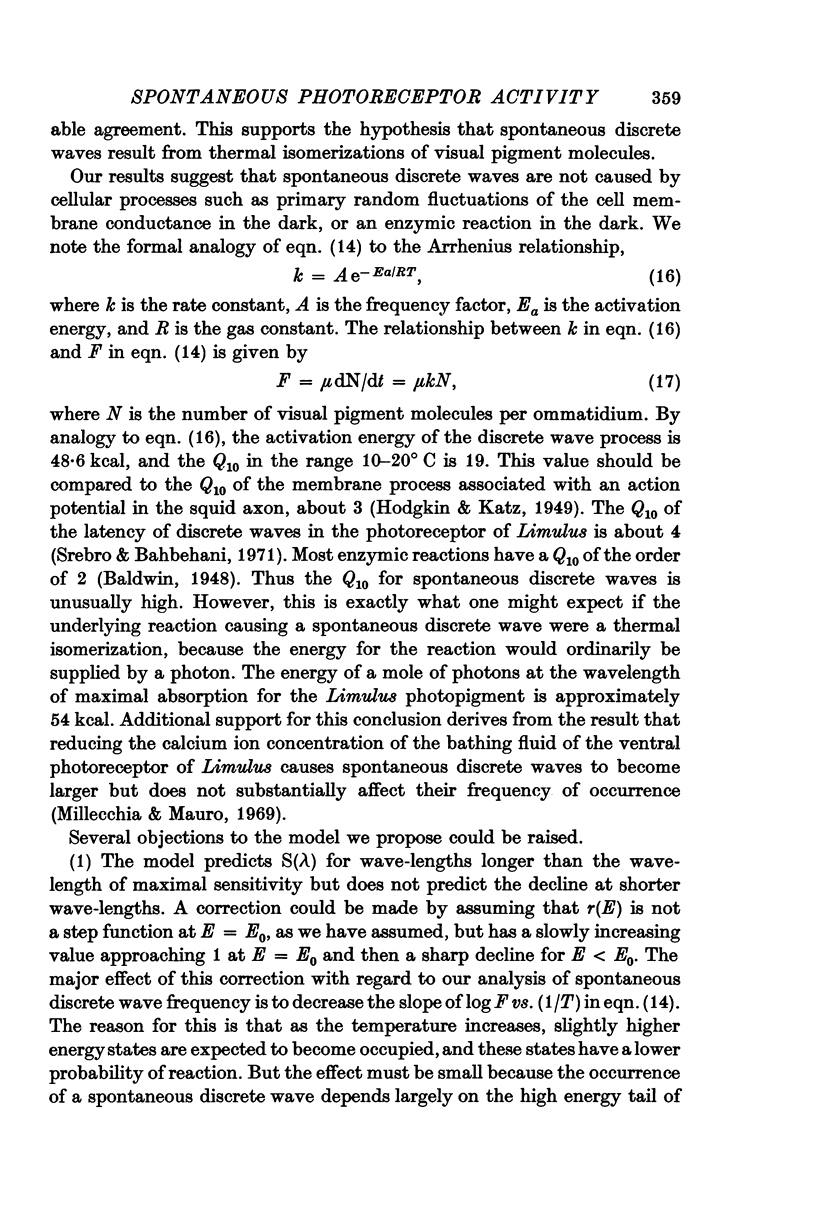
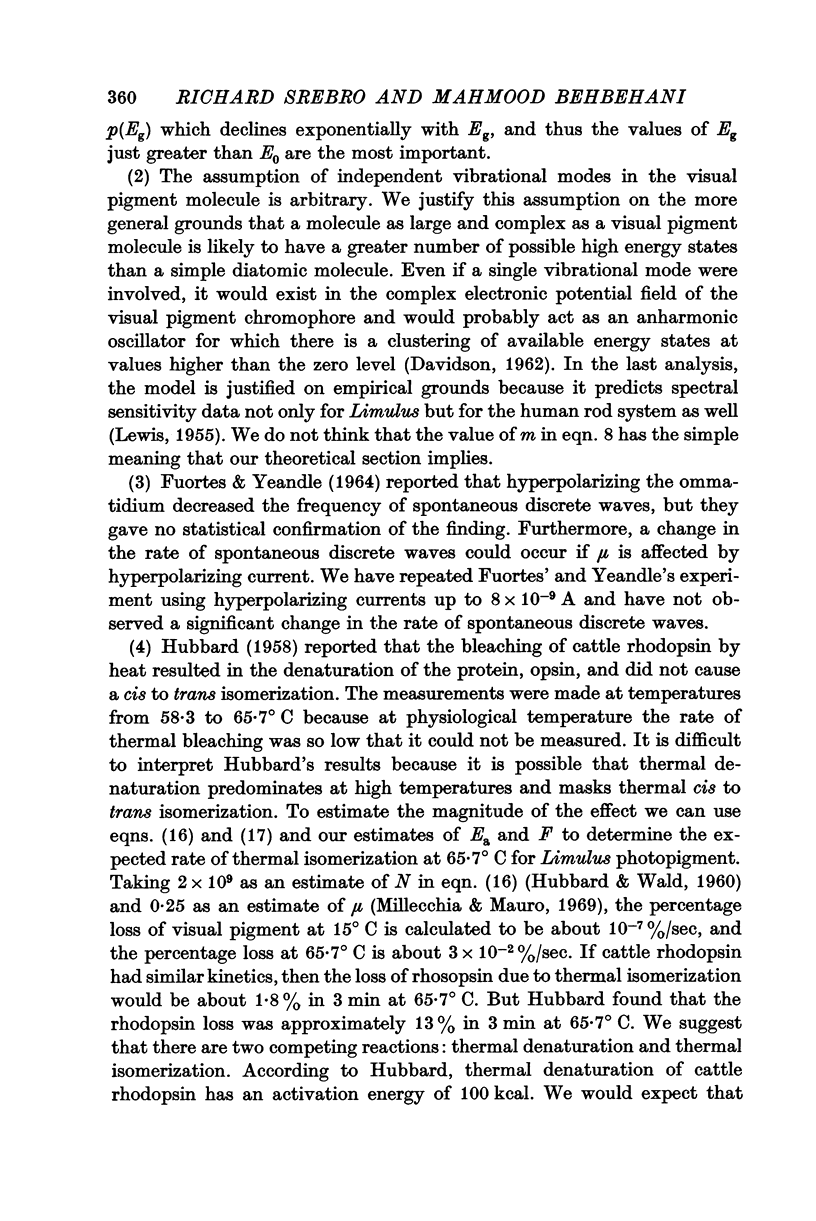
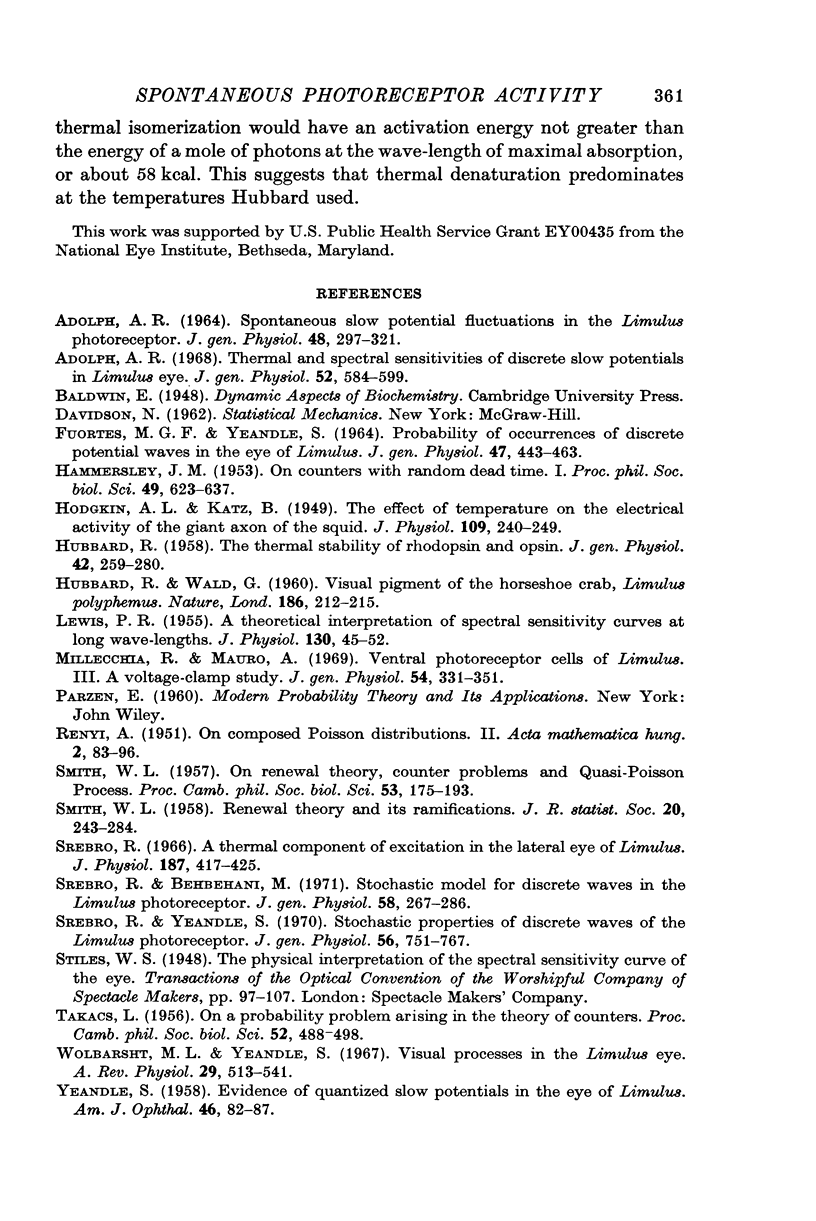
Selected References
These references are in PubMed. This may not be the complete list of references from this article.
- ADOLPH A. R. SPONTANEOUS SLOW POTENTIAL FLUCTUATIONS IN THE LIMULUS PHOTORECEPTOR. J Gen Physiol. 1964 Nov;48:297–322. doi: 10.1085/jgp.48.2.297. [DOI] [PMC free article] [PubMed] [Google Scholar]
- Adolph A. R. Thermal and spectral sensitivities of discrete slow potentials in Limulus eye. J Gen Physiol. 1968 Oct;52(4):584–599. doi: 10.1085/jgp.52.4.584. [DOI] [PMC free article] [PubMed] [Google Scholar]
- FUORTES M. G., YEANDLE S. PROBABILITY OF OCCURRENCE OF DISCRETE POTENTIAL WAVES IN THE EYE OF LIMULUS. J Gen Physiol. 1964 Jan;47:443–463. doi: 10.1085/jgp.47.3.443. [DOI] [PMC free article] [PubMed] [Google Scholar]
- HODGKIN A. L., KATZ B. The effect of temperature on the electrical activity of the giant axon of the squid. J Physiol. 1949 Aug;109(1-2):240–249. doi: 10.1113/jphysiol.1949.sp004388. [DOI] [PMC free article] [PubMed] [Google Scholar]
- HUBBARD R. The thermal stability of rhodopsin and opsin. J Gen Physiol. 1958 Nov 20;42(2):259–280. doi: 10.1085/jgp.42.2.259. [DOI] [PMC free article] [PubMed] [Google Scholar]
- HUBBARD R., WALD G. Visual pigment of the horseshoe crab, Limulus polyphemus. Nature. 1960 Apr 16;186:212–215. doi: 10.1038/186212b0. [DOI] [PubMed] [Google Scholar]
- LEWIS P. R. A theoretical interpretation of spectral sensitivity curves at long wavelengths. J Physiol. 1955 Oct 28;130(1):45–52. doi: 10.1113/jphysiol.1955.sp005391. [DOI] [PMC free article] [PubMed] [Google Scholar]
- Millecchia R., Mauro A. The ventral photoreceptor cells of Limulus. 3. A voltage-clamp study. J Gen Physiol. 1969 Sep;54(3):331–351. doi: 10.1085/jgp.54.3.331. [DOI] [PMC free article] [PubMed] [Google Scholar]
- Srebro R. A thermal component of excitation in the lateral eye of Limulus. J Physiol. 1966 Nov;187(2):417–425. doi: 10.1113/jphysiol.1966.sp008099. [DOI] [PMC free article] [PubMed] [Google Scholar]
- Srebro R., Behbehani M. A stochastic model for discrete waves in the Limulus photoreceptor. J Gen Physiol. 1971 Sep;58(3):267–286. doi: 10.1085/jgp.58.3.267. [DOI] [PMC free article] [PubMed] [Google Scholar]
- Srebro R., Yeandle S. Stochastic properties of discrete waves of the limulus photoreceptor. J Gen Physiol. 1970 Dec;56(6):751–767. doi: 10.1085/jgp.56.6.751. [DOI] [PMC free article] [PubMed] [Google Scholar]
- Wolbarsht M. L., Yeandle S. S. Visual processes in the Limulus eye. Annu Rev Physiol. 1967;29:513–542. doi: 10.1146/annurev.ph.29.030167.002501. [DOI] [PubMed] [Google Scholar]


